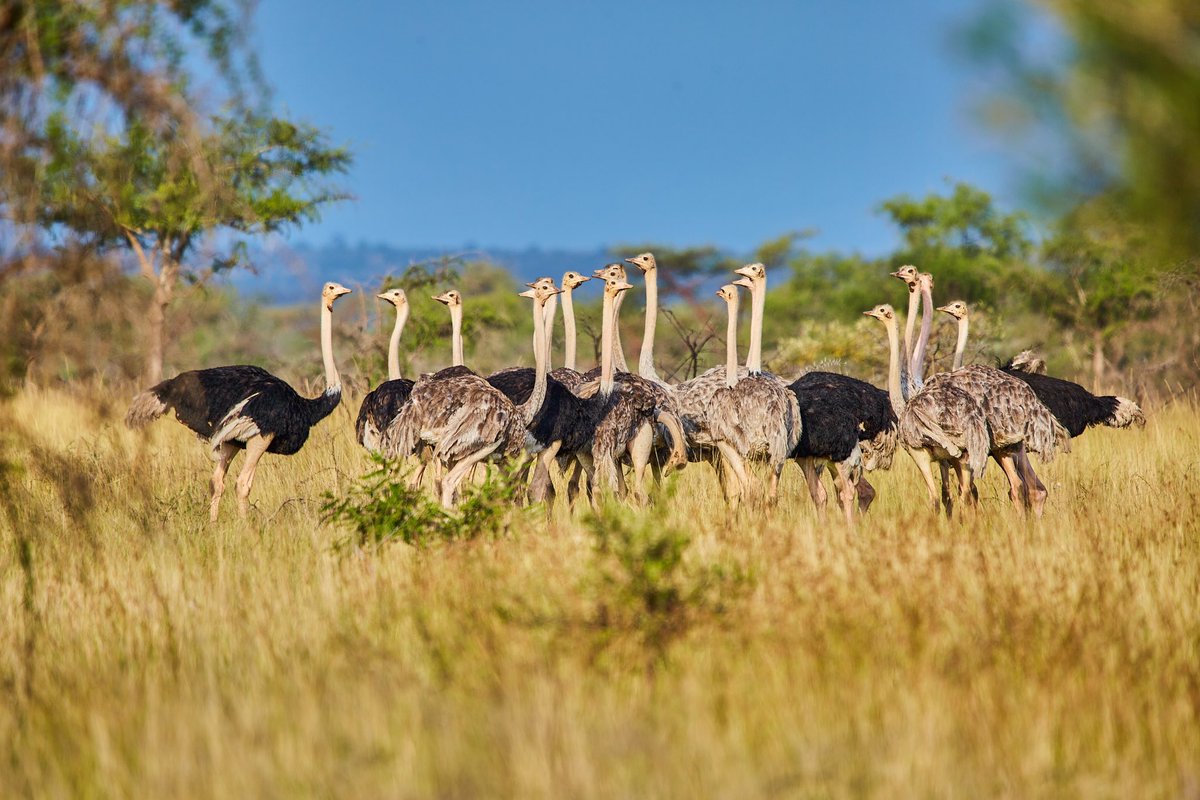
Pian Upe Birding Safari
Pian Upe Birding Safari
Pian Upe Birding Safari: Discover Uganda’s Hidden Avian Paradise
Introduction
Nestled in the remote northeastern corner of Uganda lies one of East Africa’s most underrated birding destinations — the Pian Upe Wildlife Reserve. Spanning over 2,000 square kilometers, this vast semi-arid savannah is a haven for birdwatchers and nature lovers seeking an off-the-beaten-path experience. A Pian Upe Birding Safari offers a unique opportunity to encounter rare and endemic bird species, dramatic landscapes, and a tranquil wilderness untouched by mass tourism.
In this comprehensive guide, we’ll delve into everything you need to know about planning a birding safari in Pian Upe — from the best bird species to spot, how to get there, what to pack, and why this hidden gem should be your next birdwatching destination.
Why Pian Upe is a Birding Paradise
A Biodiversity Hotspot
Pian Upe is Uganda’s second-largest protected area after Murchison Falls National Park. Its diverse habitats — ranging from open grasslands and rocky outcrops to seasonal rivers and acacia woodlands — support over 300 bird species. The reserve is part of the Karamoja region, known for its rich cultural heritage and unique wildlife.
Rare and Endemic Species
Birders flock to Pian Upe for a chance to see some of East Africa’s most elusive species, including:
- Karamoja Apalis – an endemic species found only in northeastern Uganda
- Secretary Bird – a striking raptor known for its long legs and snake-hunting prowess
- Abyssinian Ground Hornbill – a large terrestrial bird with a booming call
- Jackson’s Hornbill – another regional specialty
- Eastern Violet-backed Sunbird – a colorful nectar feeder
Other notable birds include the Fox Kestrel, African Grey Hornbill, and Hartlaub’s Bustard.
Best Time for a Pian Upe Birding Safari
Dry Season (December to March)
This is the ideal time for birding in Pian Upe. The dry conditions force birds to congregate around water sources, making them easier to spot. Migratory species from Europe and northern Africa also arrive during this period, increasing the diversity.
Wet Season (April to November)
While the reserve becomes lush and green, birding can be more challenging due to dense vegetation and muddy roads. However, this is the breeding season for many resident species, offering opportunities to observe courtship displays and nesting behavior.
How to Get to Pian Upe
By Road
Pian Upe is accessible by road from Kampala, Uganda’s capital. The journey takes approximately 8–10 hours, depending on road conditions. Most travelers combine a visit to Pian Upe with other attractions in the region, such as Sipi Falls or Kidepo Valley National Park.
By Air
Chartered flights can be arranged to nearby airstrips such as Moroto or Soroti, followed by a drive to the reserve. This is a faster but more expensive option.
Top Birding Spots in Pian Upe
1. Cheposukunya Plains
These open grasslands are ideal for spotting ground-dwelling species like bustards, lapwings, and coursers.
2. Mount Kadam Foothills
The rocky slopes and acacia thickets around Mount Kadam are home to the Karamoja Apalis and other forest-edge species.
3. Lorengedwat Riverine Forest
This seasonal river provides a lush corridor for sunbirds, bee-eaters, and kingfishers.
What to Expect on a Birding Safari
Guided Walks and Game Drives
Most birding safaris in Pian Upe include early morning and late afternoon excursions led by experienced ornithologists or local guides. These outings maximize your chances of spotting rare species and learning about their behaviors.
Wildlife Encounters
While birds are the main attraction, Pian Upe is also home to:
- Cheetahs
- Roan antelopes
- Elands
- Olive baboons
- Rock hyraxes
This makes for a well-rounded safari experience.
What to Pack for a Birding Safari
Essential Gear
- Binoculars (8×42 or 10×42 recommended)
- Field Guide to East African birds
- Camera with telephoto lens
- Notebook for recording sightings
- Lightweight clothing in neutral colors
- Sturdy hiking boots
- Wide-brimmed hat and sunglasses
- Sunscreen and insect repellent
- Reusable water bottle
Where to Stay Near Pian Upe
Though accommodation options are limited, a few camps and lodges offer comfortable stays:
- Karamoja Safari Camp – Offers guided birding tours and cultural experiences
- Sipi River Lodge – Ideal for combining birding with a visit to Sipi Falls
- Camping in Pian Upe – For the adventurous, camping inside the reserve offers a raw, immersive experience
Cultural Experiences
A Pian Upe safari isn’t just about birds. The region is home to the Karimojong people, a pastoralist community with rich traditions. Cultural tours can be arranged to learn about:
- Traditional dances
- Herding practices
- Local crafts
- Indigenous knowledge of wildlife
Conservation and Responsible Tourism
Protecting Pian Upe’s Ecosystem
The reserve faces threats from poaching, habitat loss, and climate change. By choosing eco-conscious operators like Turkana Wildlife Safaris, you contribute to conservation efforts and community development.
Tips for Responsible Birding
- Avoid playback calls that stress birds
- Stay on designated trails
- Do not litter or disturb wildlife
- Support local guides and businesses
Sample Itinerary: 5-Day Pian Upe Birding Safari
Day 1: Arrival in Kampala, overnight stay
Day 2: Drive to Pian Upe via Sipi Falls, birding en route
Day 3: Full-day birding in Pian Upe – Cheposukunya Plains and Mount Kadam
Day 4: Morning birding, afternoon cultural visit to Karimojong village
Day 5: Return to Kampala or continue to Kidepo Valley National Park
Why Choose Turkana Wildlife Safaris?
Turkana Wildlife Safaris is a trusted tour operator specializing in customized birding and wildlife safaris across Uganda and Kenya. Their Pian Upe Birding Safari packages include:
- Expert birding guides
- Comfortable 4×4 transport
- All park fees and permits
- Accommodation and meals
- Cultural interactions
Frequently Asked Questions (FAQ)
1. Is Pian Upe safe for tourists?
Yes, Pian Upe is safe for visitors. The reserve is managed by the Uganda Wildlife Authority, and guided tours ensure security and comfort. Learn more about safety tips.
2. How many bird species can I expect to see?
Over 300 species have been recorded in Pian Upe. On a typical 3–5 day safari, you may spot 100–150 species, depending on the season and your birding experience. Check the bird list here.
3. Can I combine Pian Upe with other birding destinations?
Absolutely. Pian Upe pairs well with Mabira Forest, Budongo Forest, and Queen Elizabeth National Park.
4. What is the best time to visit Pian Upe?
The dry season (December to March) offers the best birding conditions. However, the wet season has its own rewards, especially for breeding behavior. Plan your trip with expert advice.
5. Do I need a permit to visit Pian Upe?
Yes, entry permits are required and are typically included in tour packages. Turkana Wildlife Safaris handles all logistics for you.
Final Thoughts
A Pian Upe Birding Safari is more than just a checklist of rare birds — it’s an invitation to explore one of Uganda’s last wild frontiers. With its untouched landscapes, rich biodiversity, and cultural depth, Pian Upe offers a birding experience that is both profound and personal.
Whether you’re a seasoned birder or a curious traveler, this hidden gem promises memories that will echo in your heart long after the last birdcall fades into the savannah breeze.
Ready to embark on your avian adventure? Book your Pian Upe Birding Safari today with Turkana Wildlife Safaris.
